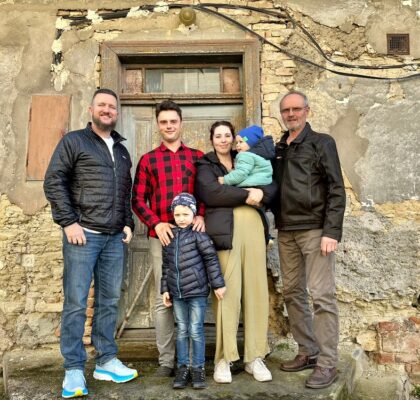It’s Complicated
My country #164 was Cyprus, but it’s not that cut and dry. Cyprus is an island consisting of three nations, actually – and that only depends on whom you ask. The history of Cyprus is long, complicated, and—to me—incredibly intriguing. I’m just recently learning about this country and its borders, suitors, invaders and crusaders, so I am, by no means an expert or even remotely qualified to quote intricate historical facts on the island, so I’m going to keep the political stuff as brief as possible in an effort not to make (m)any errors and enemies.
However, ignoring the stark division of the island would be silly. I encourage you to Google Cyprus or jump on YouTube, as I have lately, to learn about the fascinating (and sometimes very sad) history of Cyprus and its divisions. Of course, you’ll get a different answer depending on who you ask, and there are multiple sides to every story. Know that I will attempt to be as impartial and unbiased as I can. I don’t have enough information to form a solid opinion and it is one of my missions to keep this website as neutral as possible. These are just some notes and observations from the eyes and ears of an outsider. Feel free to leave your comments below.
These are the quick and basic facts you need to know before my tales of adventures begin. The island was/is mostly made up of Turkish Cypriots and Greek Cypriots. There was a war here (some would say invasion) in 1974. The Turks stormed in, made some noise, and when it was all said and done, had taken more than a third of the island as their own. There was now a new border that divided the new “Turkish Republic of Northern Cyprus” and the “regular” (Greek) Cyprus. The Greek Cypriots were forced south, the Turkish Cypriots headed north, and a bunch of new people from Turkey decided they’d arrive and call this new portion of Northern Cyprus their home now. It’s important to note that The Turkish Republic of Northern Cyprus is not recognized by any other nation than Turkey. It is not one of the UN’s 193 fully recognized nations and therefore did not qualify as one of the 193 countries on my list to finish.
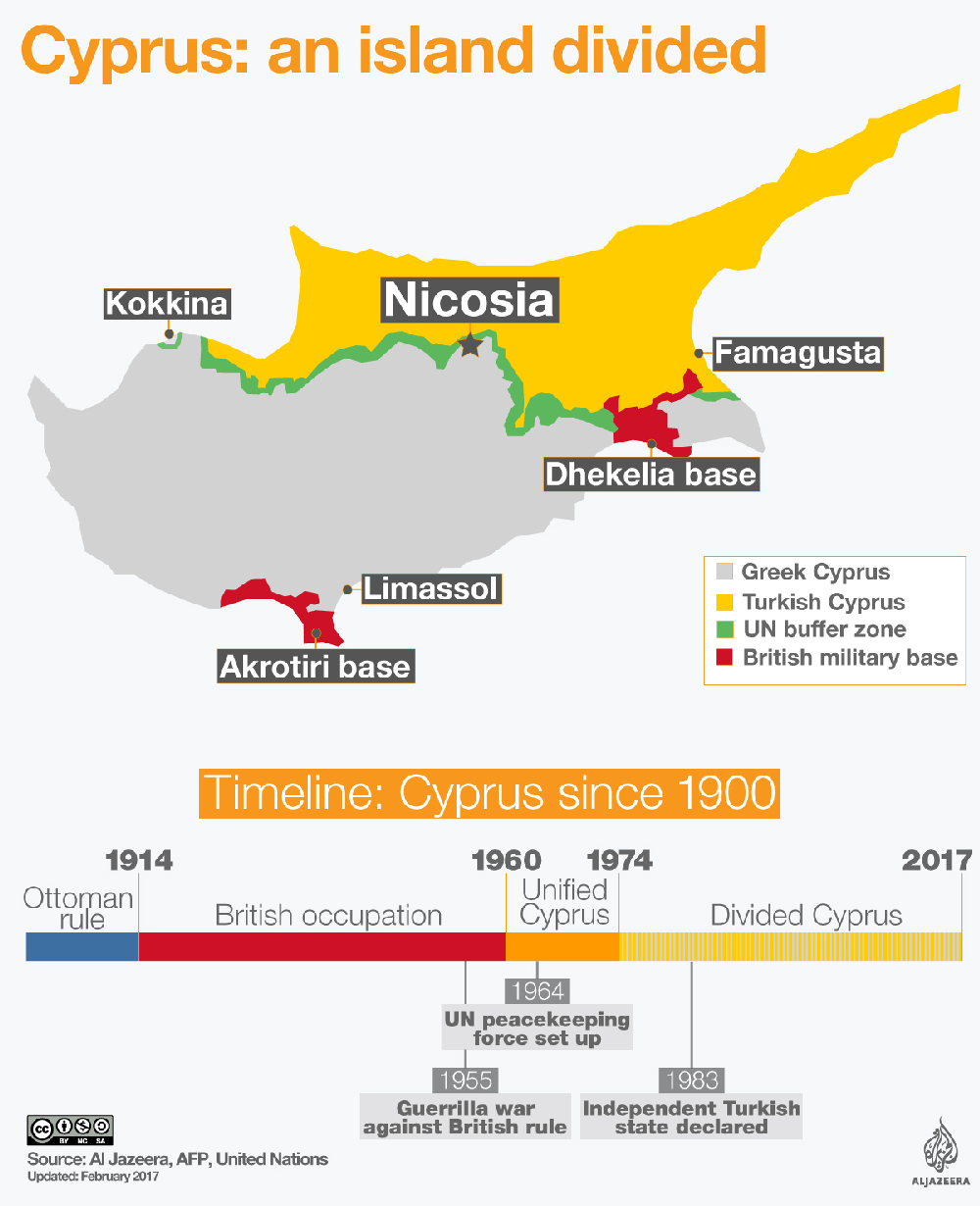
There are, however, many other “lists” besides that most-common “UN 193.” The Travelers Century Club counts 329 countries. Their list includes many territories, disputed areas and breakaway republics. Fittingly, Northern Cyprus is one of the TCC’s 329. So are Akrotiri and Dhekelia: the two sovereign British military areas on the island. So while just plain “Cyprus” would check in at #164 on my UN 193 list, it would actually check off countries 193, 194 and 195 on the TCC list. I couldn’t have come all the way here just for “regular” Cyprus, now could I?
Alright, now you know a little about the history and the lines and borders of this island nation. Now, on with the show.
Stranger Things
I enjoyed seeing Larnaka (in “regular” Cyprus) and Akrotiri and Dhekelia during the first half of my Cyprus stay. It was when I was hanging at Nissi Beach when I remembered there was a ghost town in Cyprus – an abandoned and sealed-off city that had been deserted since the 70s. It was then when I realized this place—called Famagusta—was just 12 miles away. I had to see it – or at least the edge of it.
When I asked the towel lady at the hotel about Famagusta, she was taken aback.
“I am a refugee from Famagusta,” she admitted.
I didn’t know how to respond. Here I was asking about the place as if it were an amusement park. I’d soon learn about all the pain that’s associated with this former worldwide hotspot.
I entered “Famagusta” in my GPS and set out down the road and through a dozen roundabouts before I arrived 30 minutes later. All of a sudden I found myself approaching border checkpoint signs, so I quickly turned off before it was too late. My rental car was not authorized to cross into Northern Cyprus, nor did I have my passport and documentation with me. I know, amateur move. But today was more about recon anyway. I wanted to survey the scene and come back the next day. The Famagusta Cultural Center was a big building near the border, but unfortunately it had already closed for the day. I decided to follow the big painted signs that read “Famagusta Viewpoints” which led me to “Mr. John’s” place. This was a house/café/museum and lookout point for Famagusta. My 2-Euro entry included an eight-minute video presentation, entrance to the museum and binoculars to use upstairs. My favorite part was actually the video, which told the story of Famagusta, from the Greek’s perspective of course.

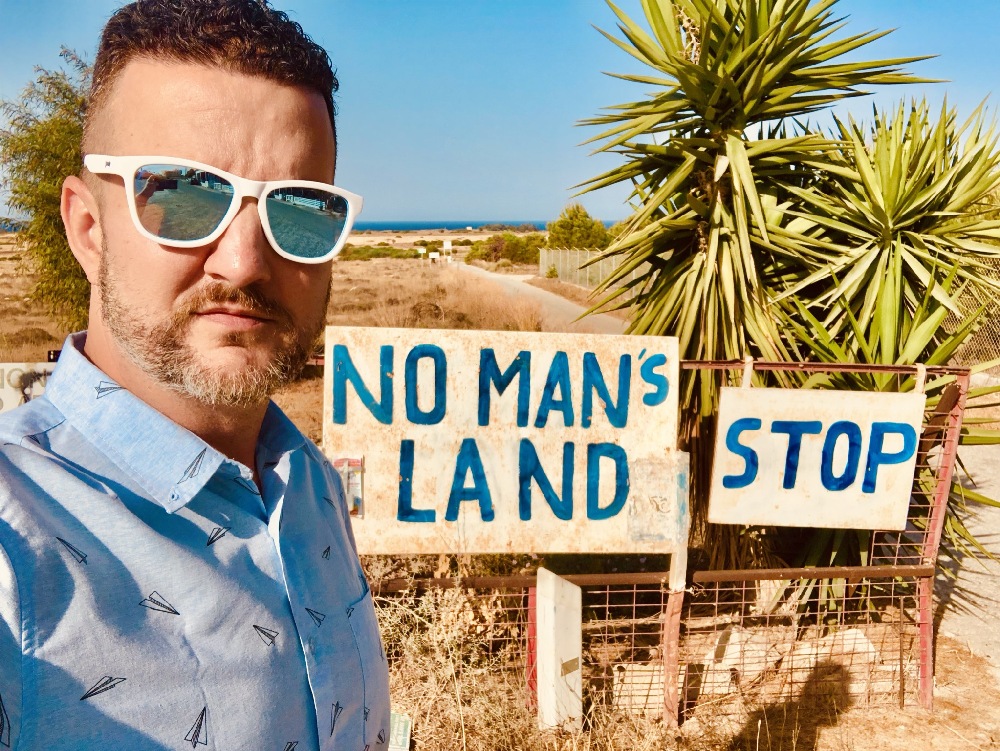
The Story, According to the Greeks
Basically, it went like this: 1974 the Turks invaded Cyprus and the city of Famagusta. The residents fled immediately with only the clothes on their back, leaving their homes, businesses and possessions behind, forever. The suburb of Varosha (inside Famagusta) has been closed, abandoned and decaying ever since, under the control of the Turks. The residents were never allowed to return. They lost everything. Don’t shoot the messenger, I’m just telling you what the video said. What made it even more interesting, was that Varosha was the crown jewel of Cyprus and a top international tourist destination. The city sounded like Miami Beach, Las Vegas and Palm Springs all rolled into one, with dozens of beachfront hotels, a vibrant nightlife and a laundry list of famous Hollywood stars who’ve visited. This place was the crème-de-la-crème – but since 1974 it’s been left forgotten and rotting. Wow. Just incredible; sad, but at the same time, super intriguing. How I wish I could get closer. I’d plan to return early tomorrow morning in an attempt to see how much closer I could get. Maybe I could take some photos through the barbed wire fences?
Upstairs at the lookout post, I really couldn’t see much with the binoculars. And the “museum” consisted of no more than a hodge-podge of literature pasted onto the walls. Besides the video (which I really loved), my other favorite part was taking a selfie in front of the “No Man’s Land” sign. That just felt “cool.”
After my visit, I headed back to the resort to call it a night. I may or may have not eaten McDonald’s that night. Don’t judge me – I like to see the different menu items from country to country. And having a Big Mac was just so convenient.

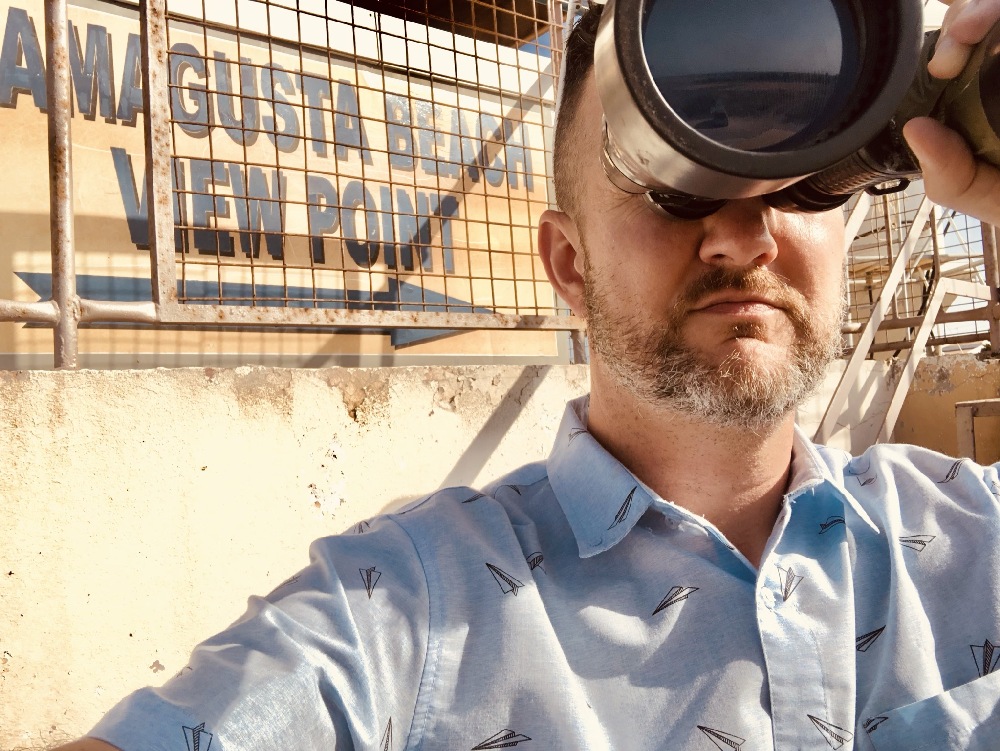
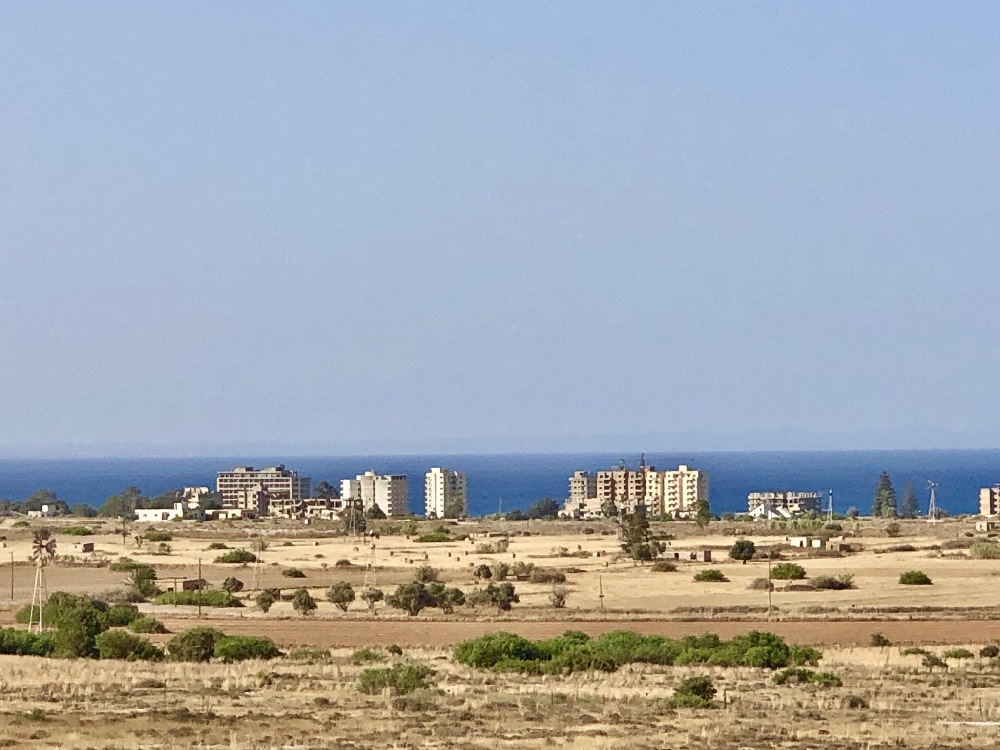
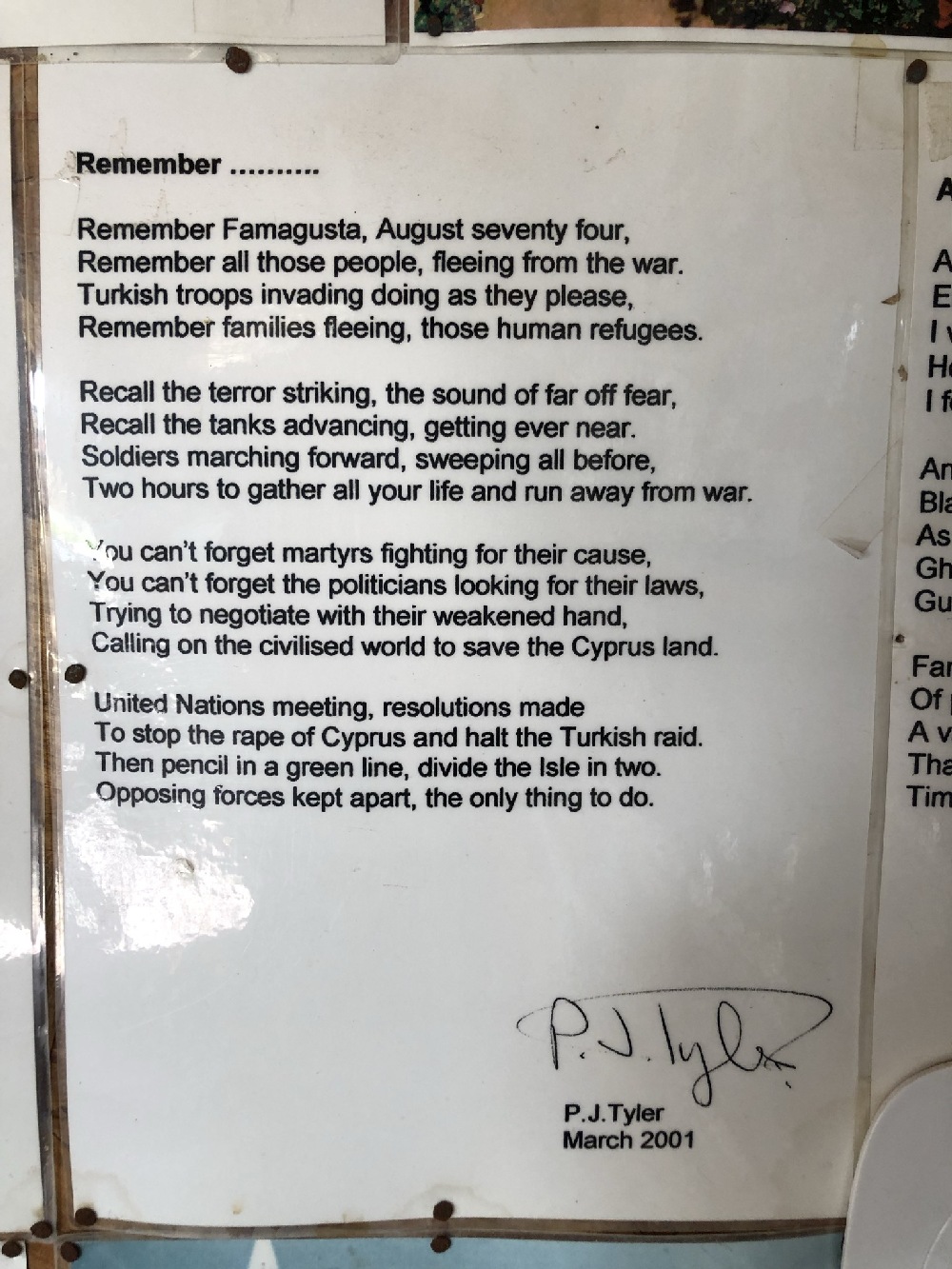

A Run for the Border
The next morning I woke early and headed back over to the border, this time with my documents. I’d arranged a taxi to meet me on the other side at 7:30AM. I was hoping to get a glimpse at Varosha. The man at the Cyprus immigration post warned me that the Turks wouldn’t let me in because I hadn’t been in Cyprus for more than 14 days. He let me try anyway, releasing me into the 500 foot UN buffer zone. This was “No Man’s Land” – an area neither the Greeks nor the Turks controlled; a narrow strip of land that ran between the two borders where technically anything could happen. Signs warning of land mines were hung from the barbed wire on each side of the road. Soon, the red Turkish flags came into view as I approached the gatehouse. I handed over my passport, vaccine card and brand new Corona test, but sure enough, it was a no-go, for the same reason the man at the Cyprus checkpoint advised me about. Not only was I not getting into Famagusta today, but now I was worried that I might not be able to cross at any checkpoint. My flight out the next day was via the other side, out of Ercan International. I’d planned to cross through the divided capital of Nicosia, but now I was wondering if that idea would be futile too. Maybe I wouldn’t be able to get into Northern Cyprus at all?
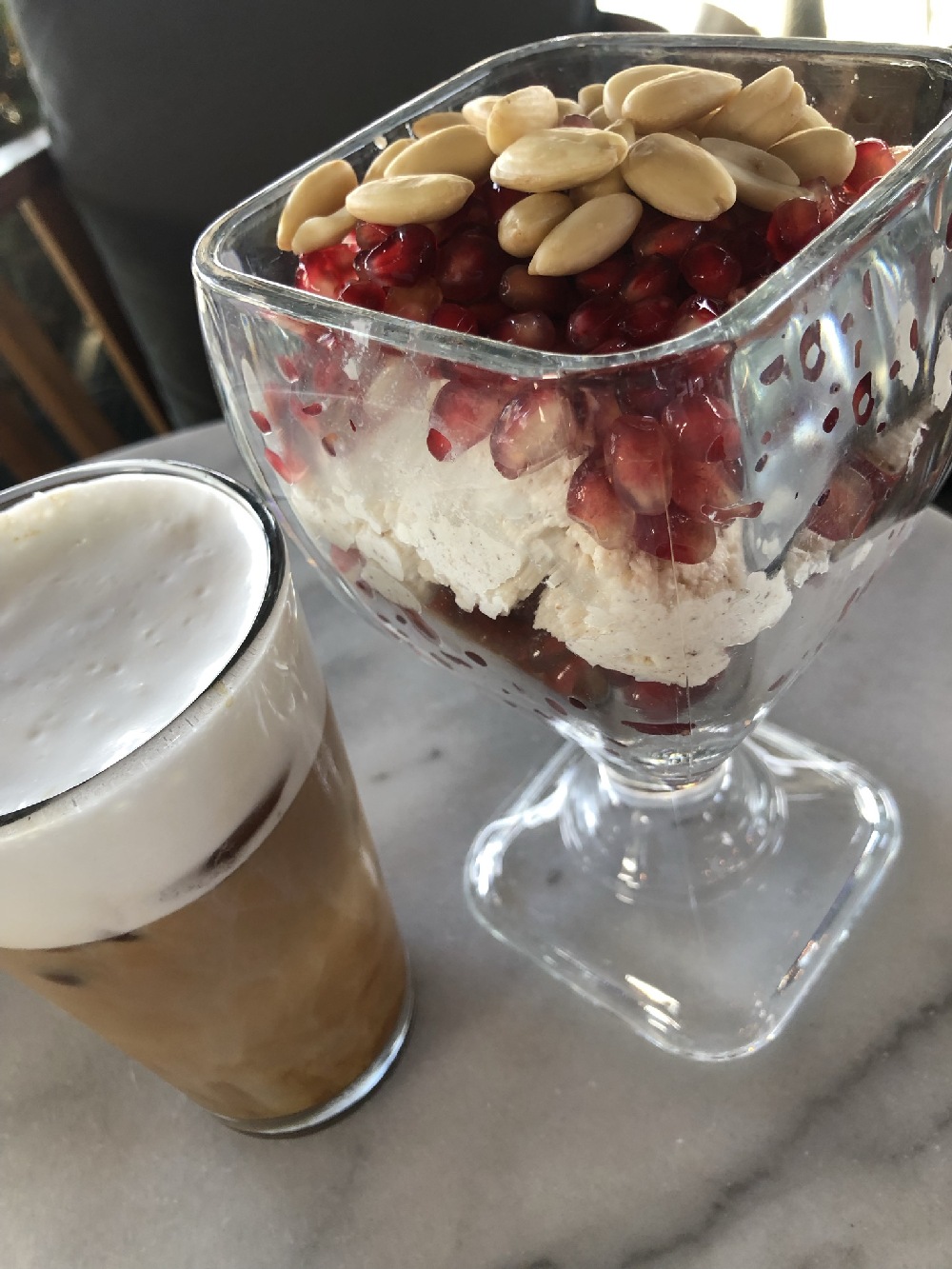
Back-Up Plan
I’ve traveled enough to know you always need a backup plan. I’d actually booked this next flight out of Northern Cyprus months ago, before finding out that the border between the north and south had been sealed shut due to Corona virus. I’d hoped the border would be open by the time of my trip, but had no guarantees, so I actually held two tickets out of Cyprus: the original flight from Nicosia (in the North), and a newly purchased seat out of Larnaca (in the South). Both flights would eventually get me to my next destination of Malta. I knew much better than to leave it to chance and this second ticket—which wasn’t that much money—afforded me the luxury of not stressing out about not getting into Northern Cyprus. Turns out the borders did open up, just days before my arrival – but this “14 day minimum stay in Southern Cyprus” malarkey threw a wrench in things. Would this be the case at all of the border crossings? Only one way to find out.
So, to Nicosia I went. The highway there was another smooth one. The hour drive North was pretty much a straight shot and the trip up was relaxing until I got into town and onto busy surface streets. Luckily, I found the rental car drop off location in no time. I explained to the man there that I’d be back for the car if I couldn’t cross to the North – I’d need to drive back for the flight out of Larnaca if I was denied entry. I was so happy to hand over those keys and be rid of the car – not because it wasn’t a nice vehicle, but because driving on the left had me so nervous the whole time. I was just so grateful no one was harmed in the process. I grabbed a cab to the center of town. It was time to cross.




The Wall
I was excited to see Nicosia, especially “the wall.” Since the Berlin Wall came down, Nicosia is the only divided capital city in Europe. I spent a good hour walking around the backstreets of the Greek side of the city, checking out various parts of the wall, which really were mostly big steel drums and barbed wire. What was most interesting to me, were the buildings along the border: structures whose front doors opened up into Greek Cyprus, but back doors led into that UN buffer zone. How crazy to live or work on one of those properties. There were a few parts of the wall that were manned by Greek Cypriot soldiers, housed in little outposts with “NO PHOTOS” signs posted. I could have explored this side of the wall for hours – I enjoyed coming around each corner to see what each blockade looked like. I’ve never seen anything like this anywhere else in the world. But I needed to see if I was going to be let in. I hated not knowing – it was time to find out the final verdict.



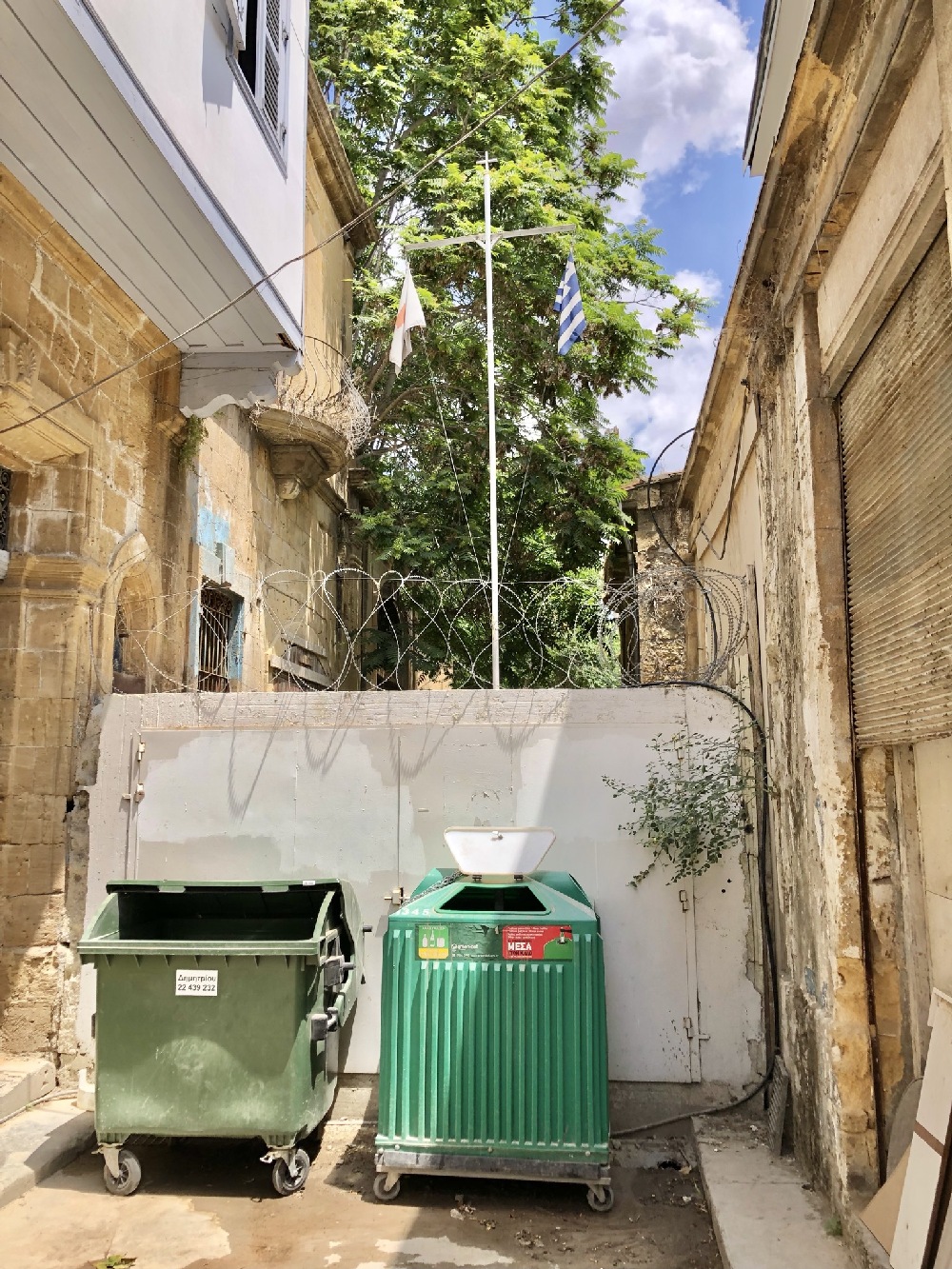
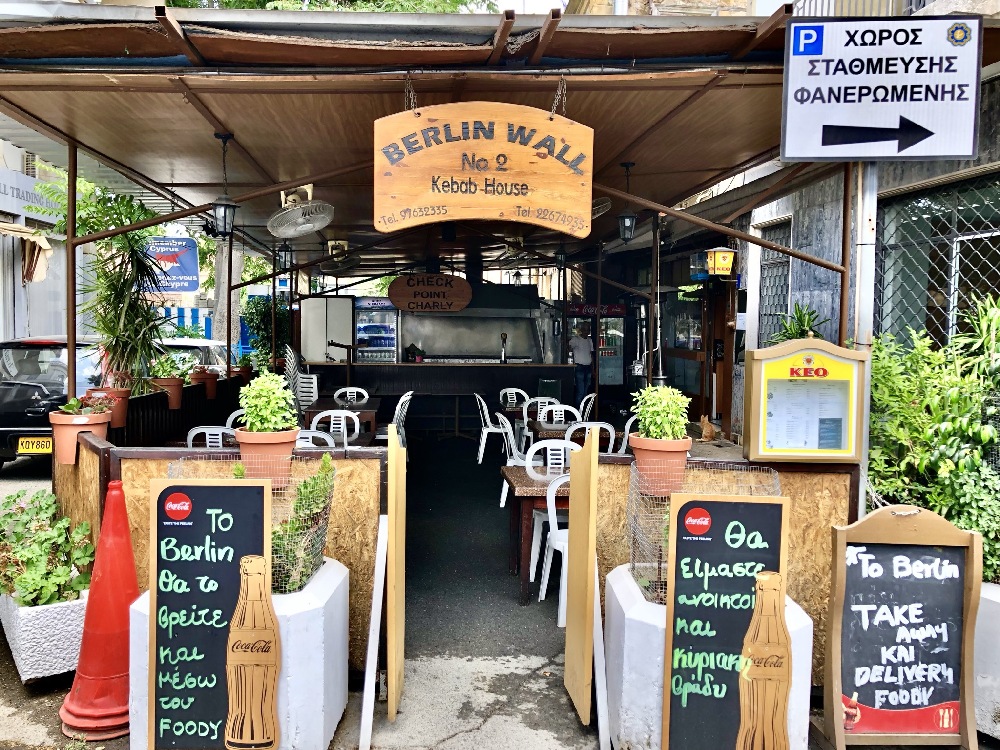
View this post on Instagram
No Turning Back
Passport and docs in hand, I approached the Greek checkpoint and was let through without issue. It was a very short walk through the buffer zone before I reached the Turkish side. I presented my documents to a much friendlier looking man than the Turk at the Famagusta crossing. 20 seconds later I was being welcomed in. I got outta there before anyone changed their mind. Woohoo! I made it in. I was so relieved! I was officially in The Turkish Republic of Northern Cyprus. Hot diggity-dog!
I stopped into a nearby bakery for a lemonade, to collect my thoughts and to find a room for the night. I’d learned the hard way during Corona season not to book rooms for questionable destinations until I knew I was actually going to make it in. There’s nothing worse than paying for a hotel room you never use. I ended up booking a place called the the TasEV Guesthouse, less than 500 feet away and in the center of the city. Though I was excited to be in Northern Cyprus, I couldn’t help but have conflicting thoughts.
Just hours earlier, when inquiring about the North back in Larnaca, a young man at the hotel quickly responded with:
“There’s nothing but poverty, casinos and whores. Poverty, casinos and whores.”
I had to hold my tongue and resist retorting: “Casinos and whores? Well now you’re speaking my language!”
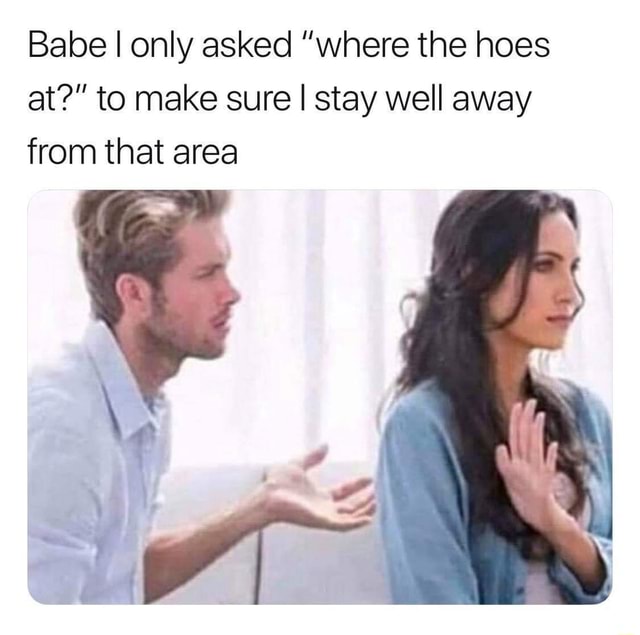
And see this, from the VisitCyprus.com official government website:
Traveller Advice Regarding the Turkish Occupied Areas of the Republic of Cyprus
The Government of the Republic of Cyprus is the only recognised Government on the island; a member of the EU since May 01, 2004, as well as a member of the UN and other International Organisations.
As a result of the Turkish military presence and occupation, the Government of the Republic of Cyprus is not in a position to exercise control over the occupied areas of the Republic. The so-called ‘TRNC’ has been condemned and declared as both illegal and invalid by the whole of the International Community through Security Council Resolutions 541/83 and 550/84. With the sole exception of Turkey, no state in the world or International Organisation recognises the secessionist entity.
Presently, it is possible for foreign tourists who visit the government-controlled area of the Republic of Cyprus, to cross to the occupied areas. It is prudent to note the following precautions:
– Staying in Greek Cypriot owned hotels in the occupied areas, which are being illegally exploited, would put you at great risk of possible legal action on the part of the owners.
– Any entry into the territory of the Republic of Cyprus via any other port or airport in the Turkish-occupied areas of Cyprus is illegal, and travellers doing so may face legal consequences. Therefore you are urged to travel via the recognised ports of entry (Larnaka and Pafos International Airports / seaports of Lemesos (Limassol), Larnaka (Larnaca), Pafos (Paphos) and Latsi).
***
Wow. By crossing, was I hanging out in “enemy territory?” And by booking this guesthouse “across the line,” was I breaking the law, or worse, hurting someone? I couldn’t help but have a sense of confusion and even guilt as I moved forward with my plans. At the same time, I hadn’t studied the subject enough and simply wasn’t informed enough to make final judgments. Traveling often comes with tough decisions…like visiting North Korea. By going to the DPRK, I was giving money to and supporting their regime. There are so many more examples. I’m not sure I have the answer. I do know, that if I refused to visit every place whose values didn’t align with mine, I’d have to forgo more than half the countries on earth, so there’s that.
Seconds later I arrived at the guesthouse. It was super charming. I let out a little sigh of relief when I met the owner Ozge–a Turk–and another (owner or manager) at the property, Cristo, who was Greek. I didn’t have the courage to ask any hard questions. They were both super warm and welcoming, especially Ozge, who gave me a tour and made me feel as if the house was my own, including full access to the kitchen fridge. I’m not sure I’ve ever experienced that before. I felt like family. Right or wrong, I knew that I’d definitely chosen the right place to stay the night and was floored by Ozge’s hospitality.
You can book the TasEV Guesthouse HERE.
I asked her about Varosha and was shocked when she confirmed that it was now open to visitors. Ozge went on to call a driver and arrange a trip. I could be there in less than an hour. I was excited! Less than 24-hours ago I was renting binoculars to try and sneak a peek from thousands of feet away – now I would actually be entering the ghost town with my own two feet. I wouldn’t believe it until I was there.
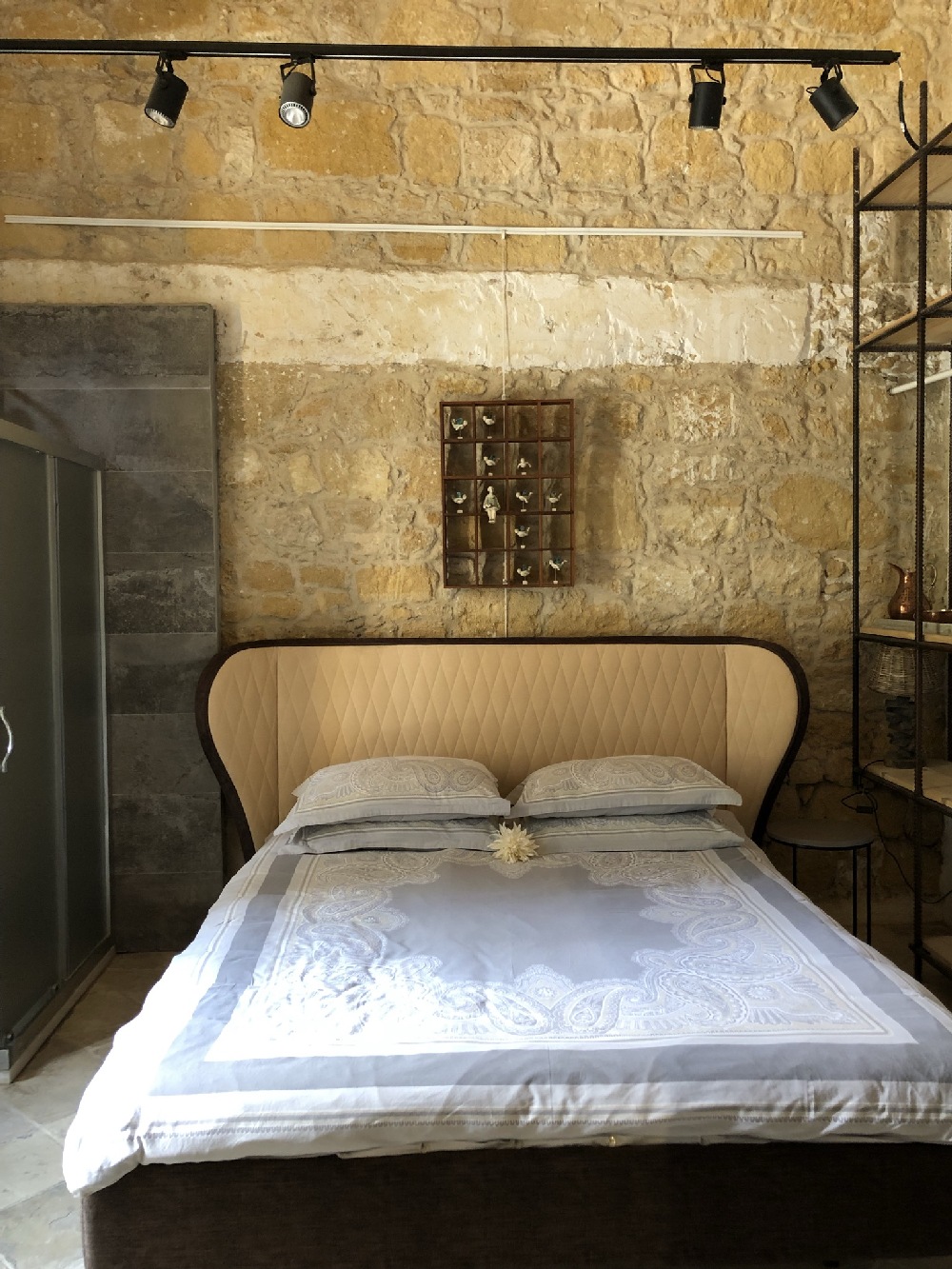
V is for Varosha
My driver had his foot to the floor most of the ride over and before I knew it, he was dropping me off at the entrance to Varosha, Famagusta. The gated entry had three guards and a big sign posted with rules – mostly reminding guests to stay on the path and not enter the buildings. My driver–whose name I didn’t get–told me I could meet him back here in an hour. But not 20 feet inside Varosha I turned right around. Sprinting back to his black Mercedes I asked, “Is a couple hours okay?” One look inside and I knew I’d be awhile. This was incredible.

The hairs on the back of my neck stood up at attention. I couldn’t believe I was here. Apparently, they’d just opened Varosha to visitors a few months ago. It was a really big deal. The entire area had been sealed tight for over 45 years. I definitely came at the right time, and I was so glad I’d inquired with Ozge back at the guesthouse. My heart would’ve been broken if I had left Cyprus without seeing Varosha only to later learn that I could’ve.
Having free reign to explore a real live ghost town was a dream come true for the kid in me and I didn’t know where to start. Most streets were open and I was given access to just about everything in every direction; I just couldn’t cross over the rope fences that separated the sidewalk from the properties. Red signs were everywhere warning visitors to stay away from and out of the buildings, which were unstable and at risk of collapse. And I believed it – these buildings were trashed! Roofs caved in, staircases fallen, windows shattered and nature taking over – this is what happens when a whole town is neglected and left to decay for nearly half a century. And I loved every part of it – except the backstory, of course.




Dora the Explorer
I walked and walked and walked and walked and walked. Over the next two hours I must’ve walked 10 miles. Bicycles were available to rent – and in hindsight, I probably should’ve – but I enjoyed stopping in front of almost every property to pause and take in every detail. I was most fascinated with the businesses whose nomenclature still remained attached: A fur shop, a custom suit tailor, a café, a disco…anything and everything you could imagine that a thriving city would have – it was all still there, but neglected and rotting. The giant TOYOTA sign had me reeling. You gotta think about it: All these things were left behind as the tanks moved in and the residents escaped for their lives, including complete car dealerships! But perhaps the banks were what really had me taken aback. A soldier reprimanded me for yanking on the safe deposit box. I couldn’t help it!
>>>RELATED: You can see ALL my photos of Varosha HERE.
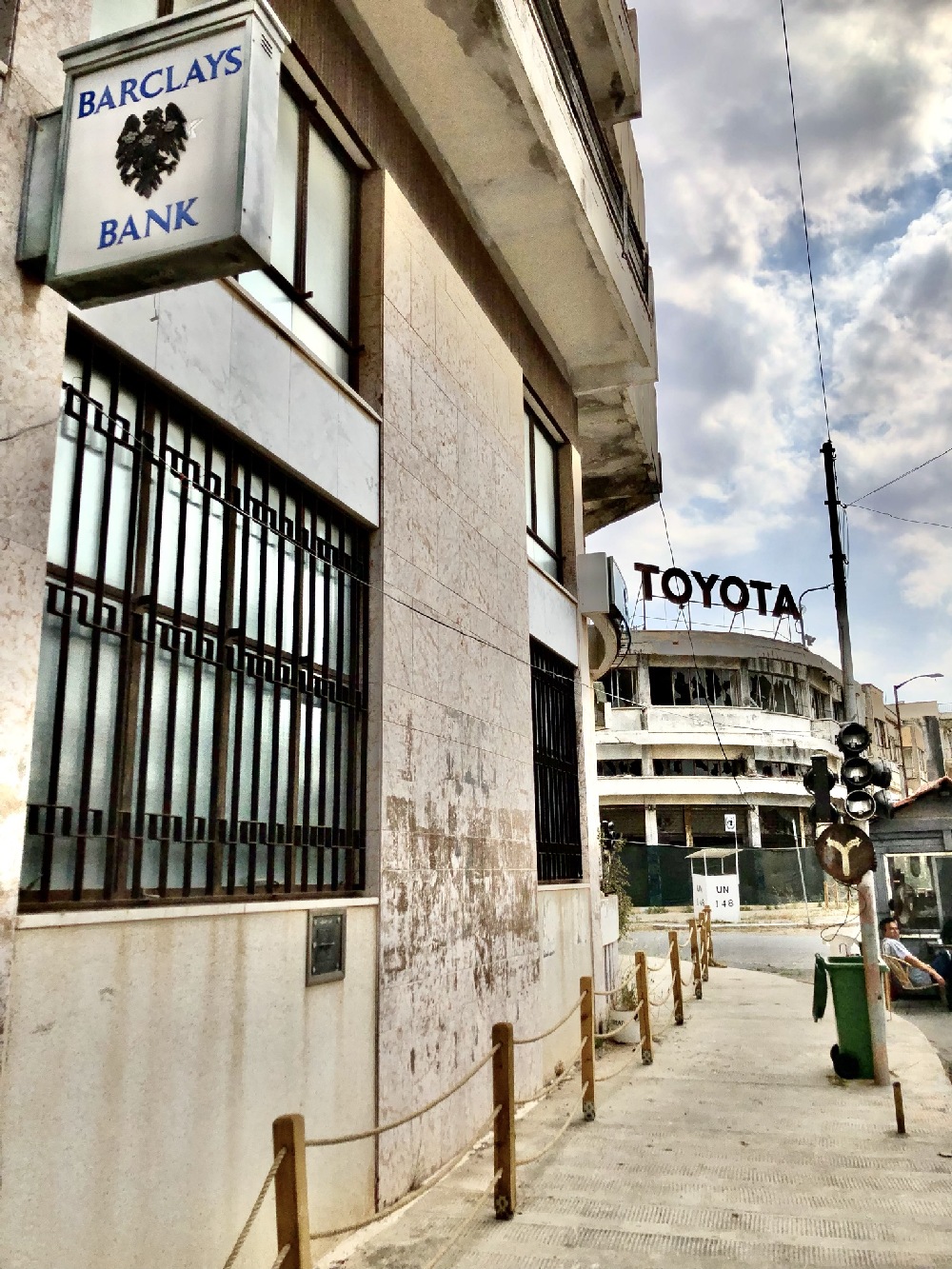
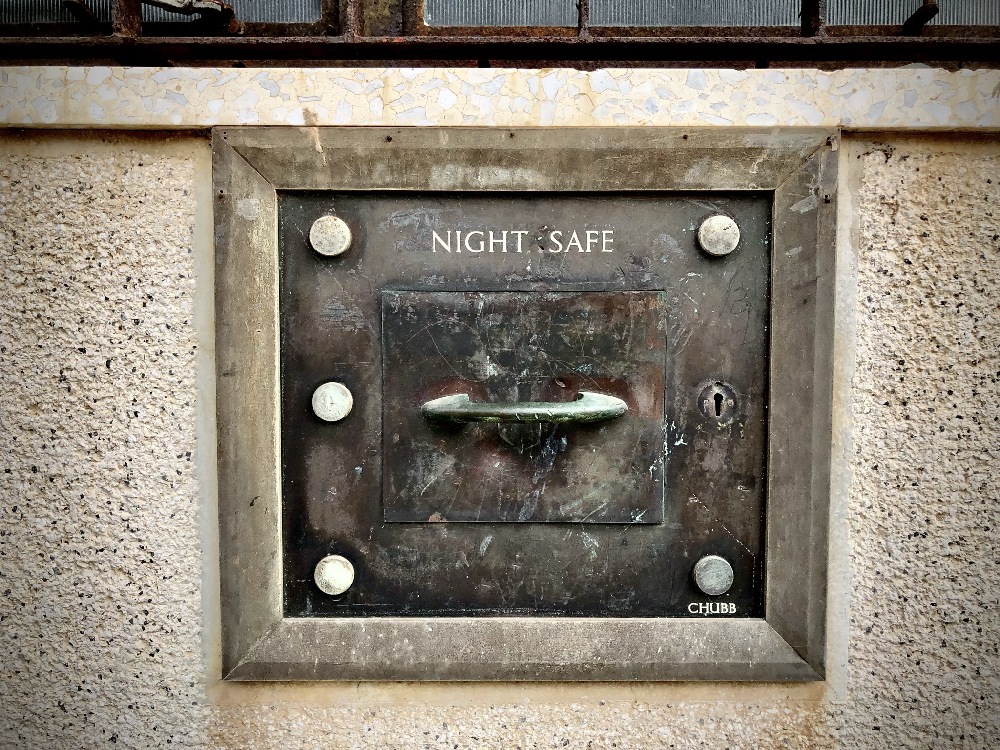

Responsible Travel
I tried to temper my excitement by reminding myself of the tragedy of it all. I did my best to put myself in the shoes of the people who lived here. They lost their homes and all of their belongings. Many lost their business – their entire lives and fortunes taken away in just minutes. Their dreams. For 45+ years, they had to watch their old neighborhood and family property just rot away. I can’t begin to imagine how I’d feel and how that would affect me. And here I am, treating this place like an amusement park. I tried my best to train my mind to continually use this experience educationally, rather than as a novelty, to just gawk at these abandoned buildings.






Pride and Joy
It’s important to realize that Varosha, in its time, was an international tourist destination and one of the most coveted vacation destinations in the Mediterranean. Once referred to as The French Riviera of Cyprus, the town brought in over 700,000 visitors each year. The Hollywood elite were no strangers to this glamorous destination, including big names like Elizabeth Taylor and Brigitte Bardot. Its 12,000 hotel rooms, recreational activities, restaurants and nightclubs made Varosha the place to be. Amazing, that overnight, the city would be left abandoned and stay that way for decades.



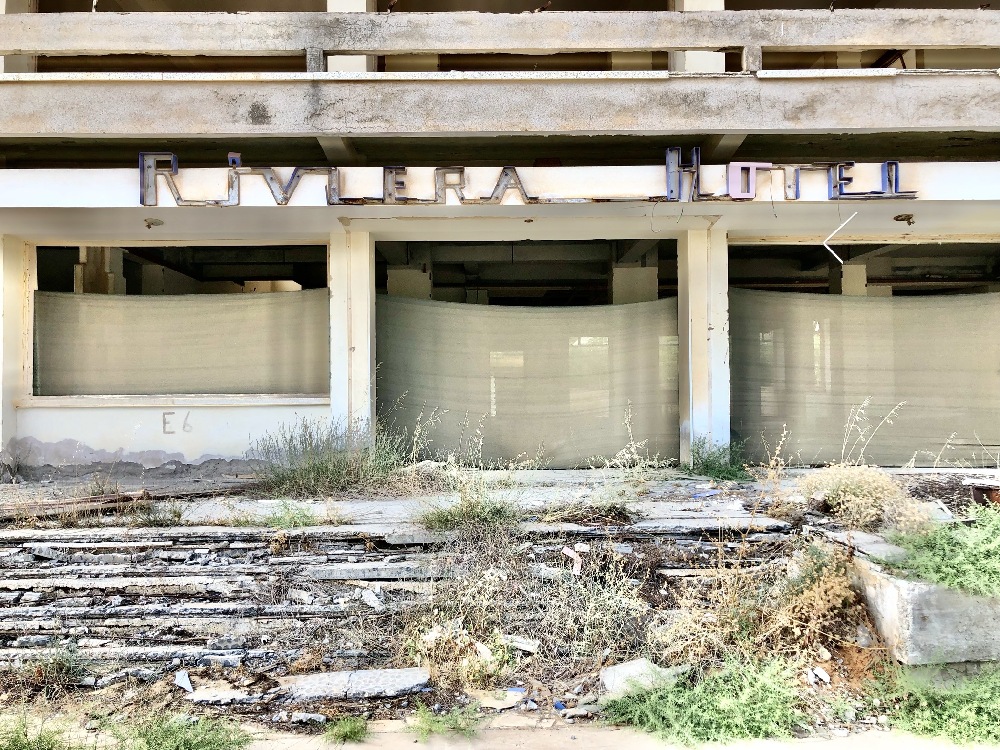
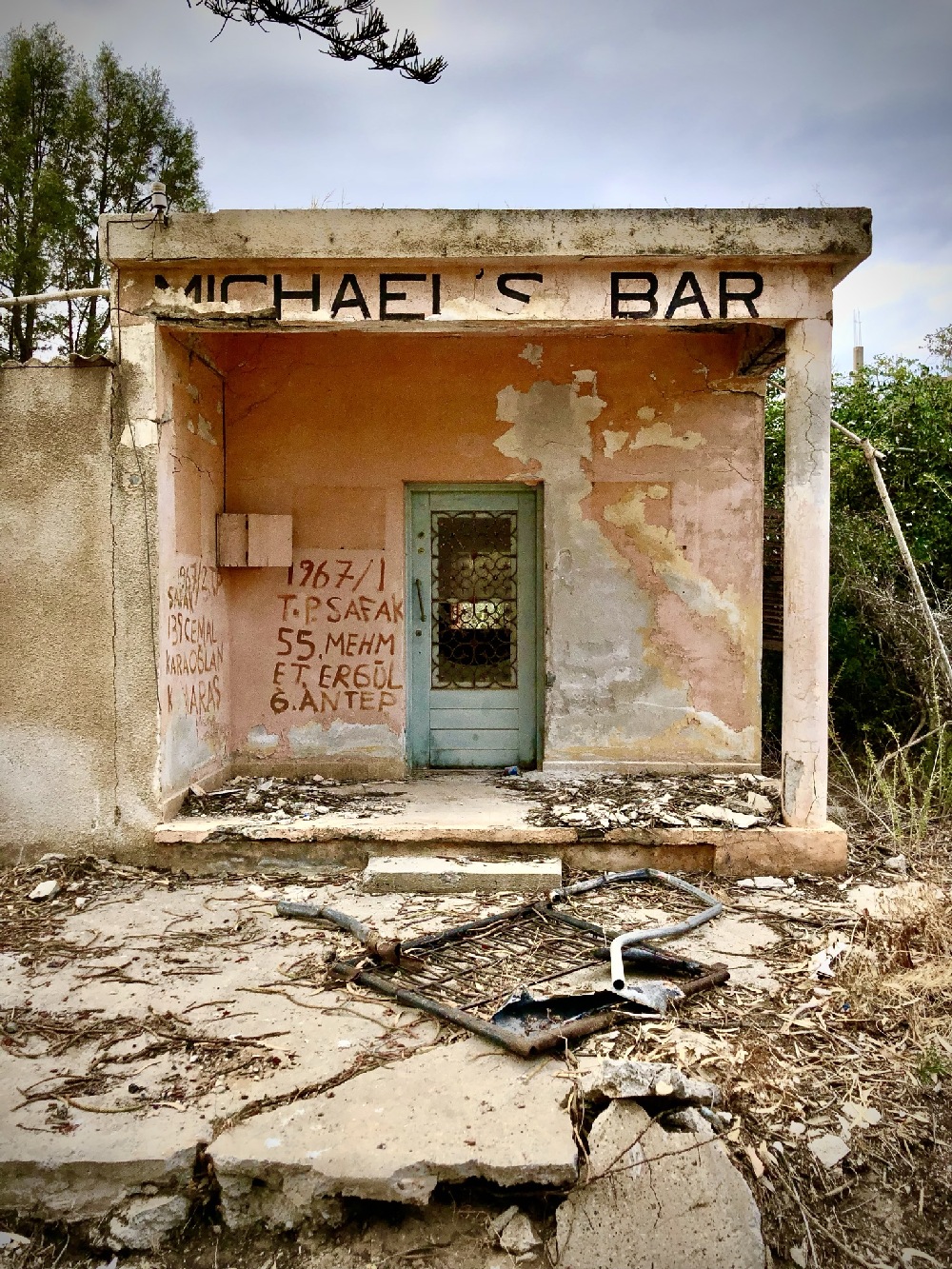

Seymour Foe-Toes
I must’ve taken a couple hundred photos during my two hours in Varosha. Just go HERE for more ghost town pics and commentary. There is a lot more about Varosha on THIS PAGE.
One Night in Nicosia
My dogs were barking after 20,000+ steps, but I had just one night in Nicosia and couldn’t go to bed without exploring a bit. I didn’t have the sunlight nor the energy to go too far, but I enjoyed my walk around the neighborhood. I passed big, beautiful mosques, the old bazaar (closed already), and a string of cool little bars strung together down an alleyway. There was a also a grouping of really neat restaurants with outdoor dining and even live music. It looked like the happening place to be on a Thursday night. Unfortunately, my dinner was a fail: I chose a döner kebab place near the center square and ended up with a plate of greasy, burnt meatballs, alongside a handful of the worst french fries I’ve even tasted in my life. It was my fault for not doing enough research – the one place I found online had already closed. Can’t win ’em all – I was still on Cloud Nine about my trip to Varosha.
I liked the vibe in Northern Nicosia and would’ve loved to hang around to see more. It was interesting to see the Greek suddenly turn to Turkish and I still have many questions – like, how was it for the Turks to change an entire third of a country from Greek to Turkish? Who decided who got what, in terms of property, assets, etc. And will this piece of Cyprus remain under Turkish control forever? Also, admittedly, I’ve heard the stories, feelings and opinions of Greek Cypriots – I really want to hear the Turks’ perspective. It’s all so fascinating to me.

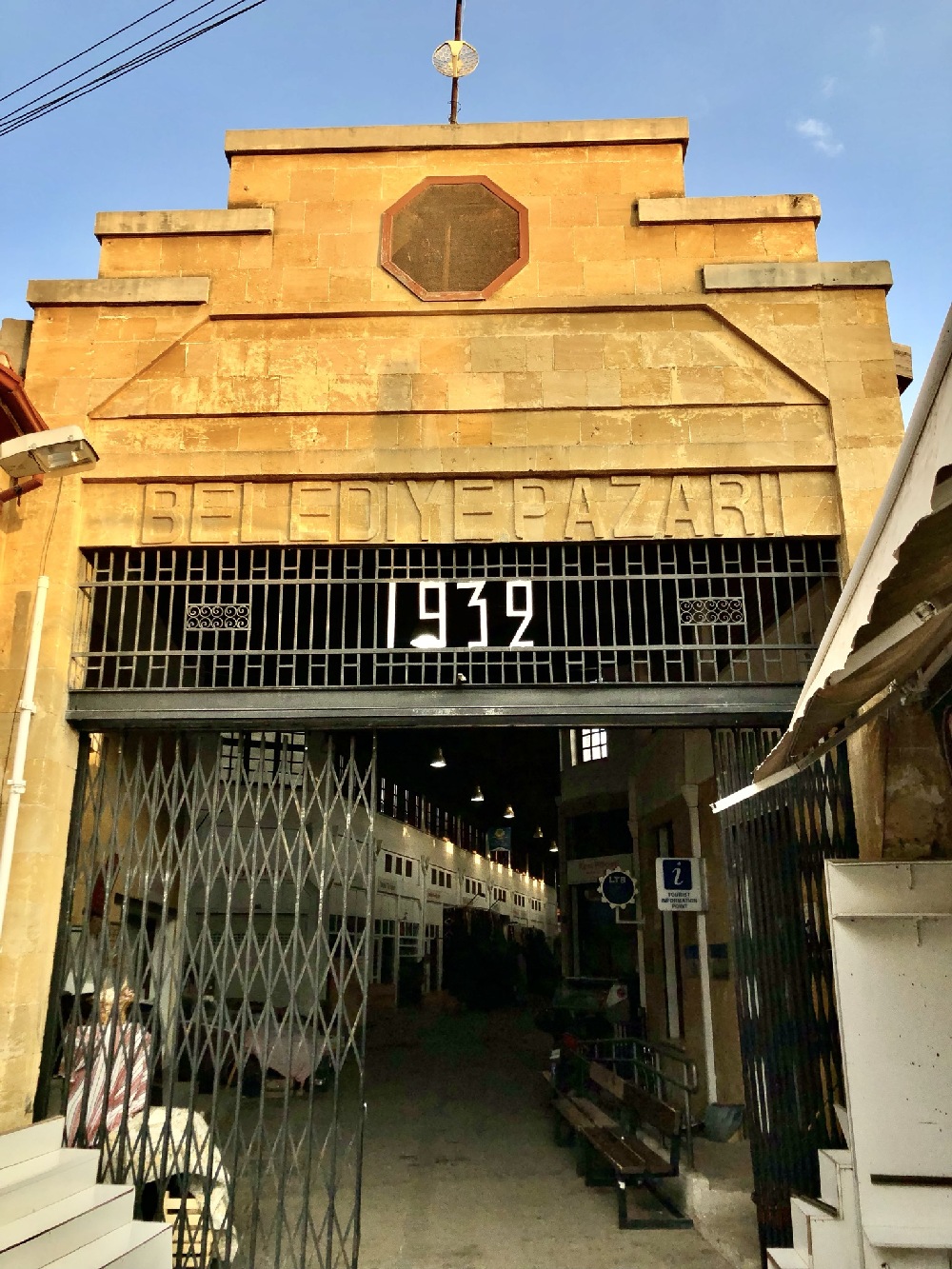
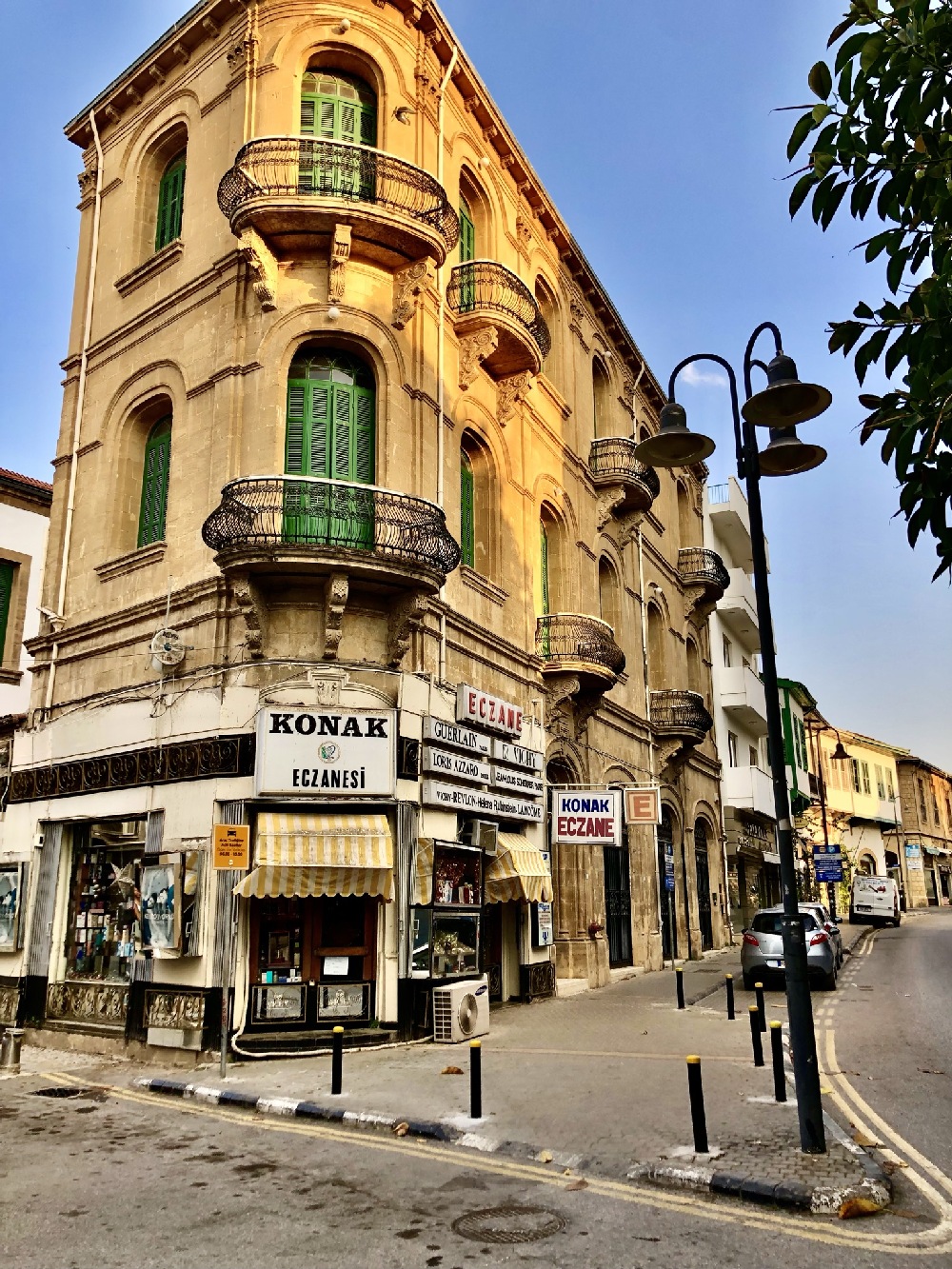


I’ll Nico-See-Ya Later!
I had a nice sleep at the TasEV Guesthouse and reckoned I was the sole guest there. In the morning I was in a cab and on the way to the airport by 7:15. Ozge had left me a nice big sack of breakfast to take with me. She was awesome. (You can book the TasEV Guesthouse HERE.)
Days earlier, I’d arrived into the Greek side via Larnaka International Airport, but this morning, I’d be departing through an “un-recognized port of entry:” The Turkish Ercan International Airport. I was told this might cause trouble for me in the future with the Greek Cypriots, but I decided to take my chances.
– Any entry into the territory of the Republic of Cyprus via any other port or airport in the Turkish-occupied areas of Cyprus is illegal, and travellers doing so may face legal consequences. Therefore you are urged to travel via the recognised ports of entry (Larnaka and Pafos International Airports / seaports of Lemesos (Limassol), Larnaka (Larnaca), Pafos (Paphos) and Latsi).
I absolutely loved Cyprus – every part I was lucky enough to explore. I felt fortunate I was able to cover so much ground in such a short period of time and I look forward to coming back one day with more time – when I can slow down and spend a few days in each region of the island. I feel there is still so much more to see and experience.
RELATED: My visit to the ghost town of Varosha, Cyprus.
UPDATE: Since publishing this article, I have spent many, many hours studying the history of Cyprus. As I’d imagined, its backstory is a lot more complex than the one paragraph I scribbled above. Here are a couple of YouTube videos I found helpful: Cyprus Dispute Explained, The Cyprus Problem, Divided Cyprus. There are many more that dive deep into the detailed history and intricacies of the division here.
This entry was posted in Europe

